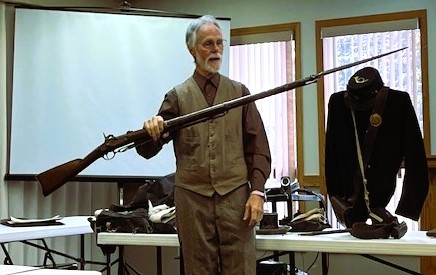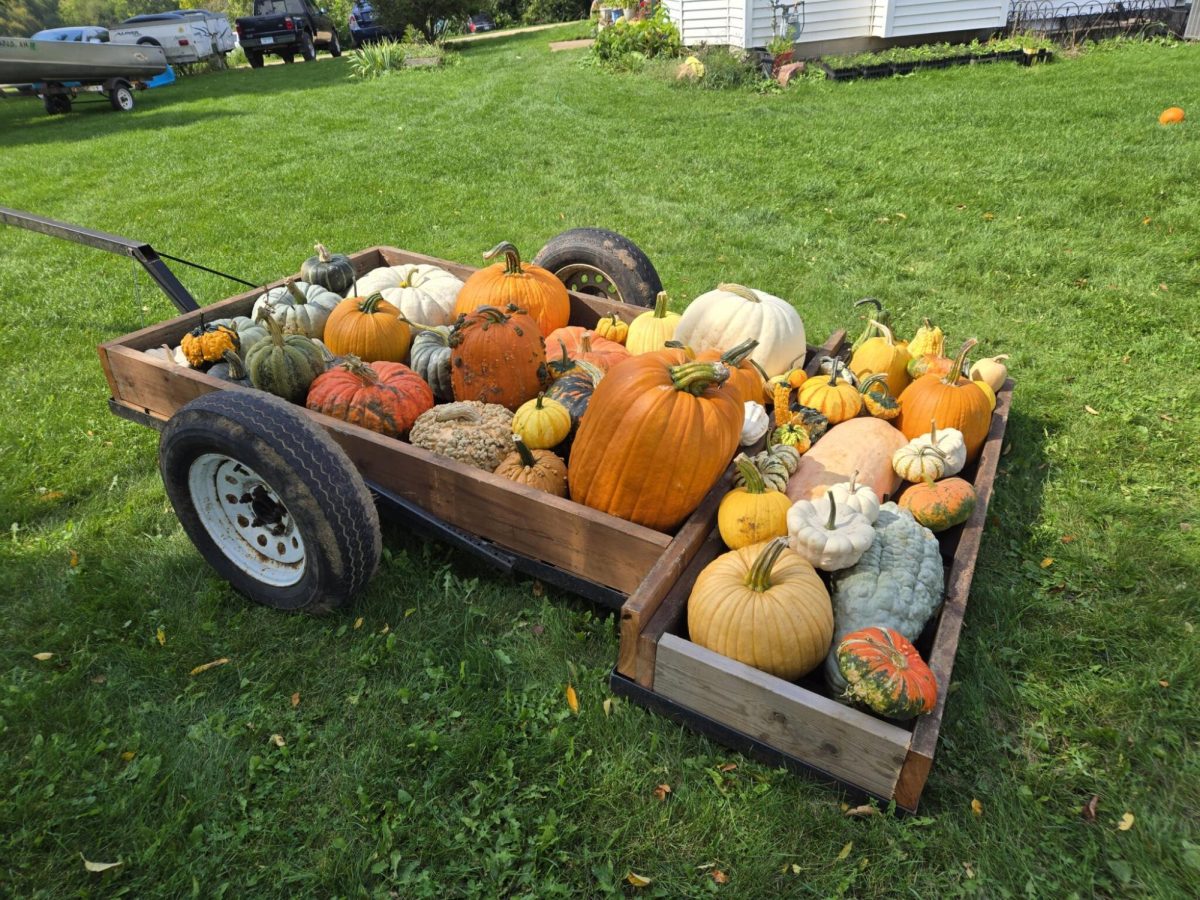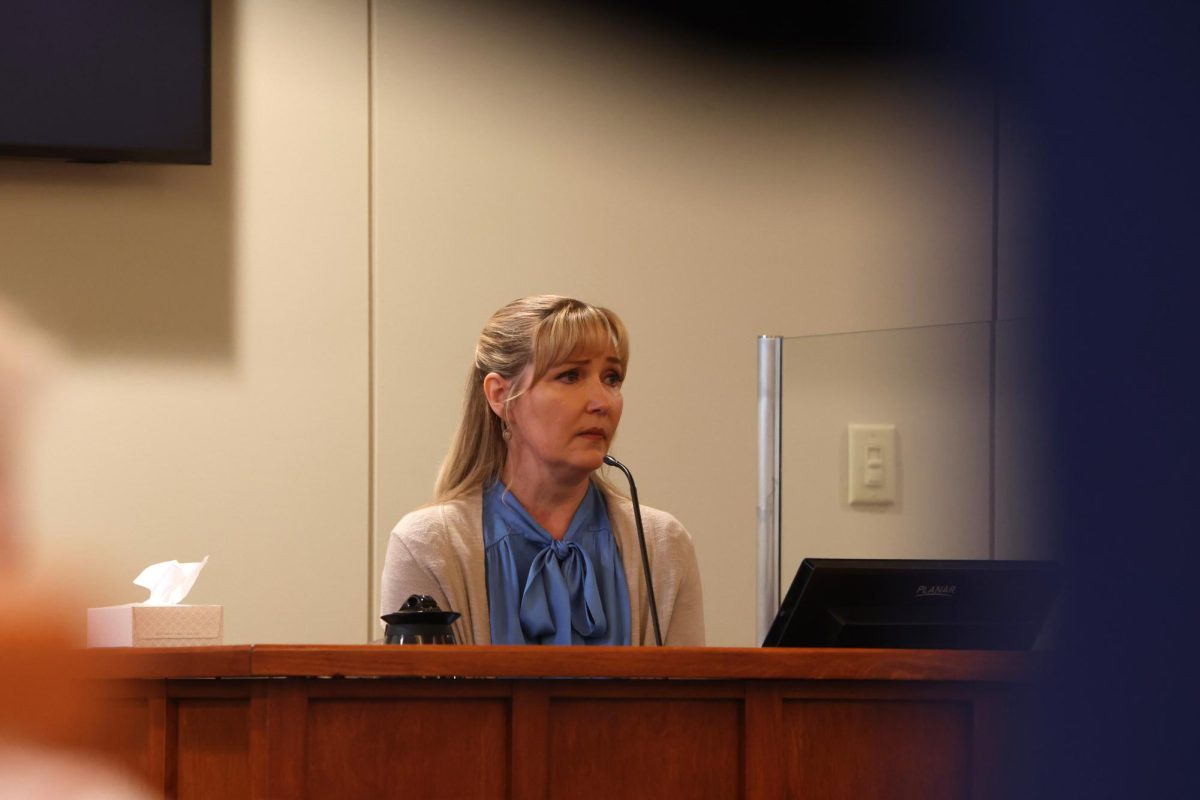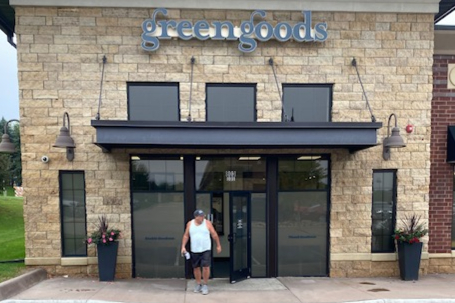A historian presented his talk, “Life As a Civil War Soldier,” to the Woodbury Heritage Society Sunday. Research by the local history group shows Woodbury residents were among the 25,000 young Minnesotans who fought for the North.
Attendees described Mike Frain’s presentation as superb for his knowledge and presentation skills. Frain is not only an expert and world traveler, but he also appeared in the 1980s TV series “North and South” and the 1989 movie called “Glory” filmed in Georgia.
While anticipating Frain’s presentation, Tom Bielenberg, a volunteer with the Woodbury Heritage Society, shared information about soldiers from Woodbury who fought in the war.
Frain and Tom Bielenberg made fantastic discoveries about our local lads. The Civil War soldiers from Woodbury were all immigrants:
- Jacob Dunn- England
- Peter Born- Prussia
- John Fitzgerald- Ireland
- Jacob Horrisberger- Switzerland
- Samuel Middleton- Ireland
Three of them were in the same regiment, the 2nd Cavalry Regiment MN Volunteers. Jacob Horrisberger was wounded at the Battle of Tupelo and Samuel Middleton died at Memphis. Bielenberg is continuing his research.
Military Service
Military service meant many months away from home and loved ones, long hours of drill, often inadequate food or shelter, disease, and many days spent marching on hot, dusty roads or in a driving rain. There were long stretches of boredom in camp interspersed with moments of sheer terror experienced on the battlefield. For these civilians turned soldiers, it was very difficult to get used to the rigors and demands of army life.
The soldier of 1863 wore a wool uniform, a belt set that included a cartridge box, cap box, bayonet and scabbard, a haversack for rations, a canteen, and a blanket roll or knapsack which contained a wool blanket, a shelter half and perhaps a rubber blanket or poncho. Inside there was a change of socks, writing paper, stamps and envelopes, ink and pen, razor, toothbrush, comb and other personal items.
The Southern soldier’s diet was considerably different from his Northern counterpart and usually less quantity. Average Confederates subsisted on bacon, cornmeal, molasses, peas, tobacco, vegetables and rice. They also received a coffee substitute which was not as desirable as the real coffee Northerners had. Trades of tobacco for coffee were quite common throughout the war when fighting was not underway. Other items for trade or barter included newspapers, sewing needles, buttons, and currency.
To Help Save Our Nation
The war left an estimated 698,000 soldiers dead including 2,500 Minnesotans, along with an undetermined number of civilian casualties, making the Civil War the deadliest military conflict in American history. Hundreds of thousands died of disease. Roughly 2% of the population, an estimated 620,000 men, lost their lives in the line of duty. Taken as a percentage of today’s population, the toll would have risen as high as 6 million. Approximately one in four soldiers that went to war never returned home. One reason why the Civil War was so lethal was the introduction of improved weaponry. Cone-shaped bullets replaced musket balls, and beginning in 1862, smooth-bore muskets were replaced with rifles with grooved barrels, which imparted spin on a bullet and allowed a soldier to hit a target a quarter of a mile away.













